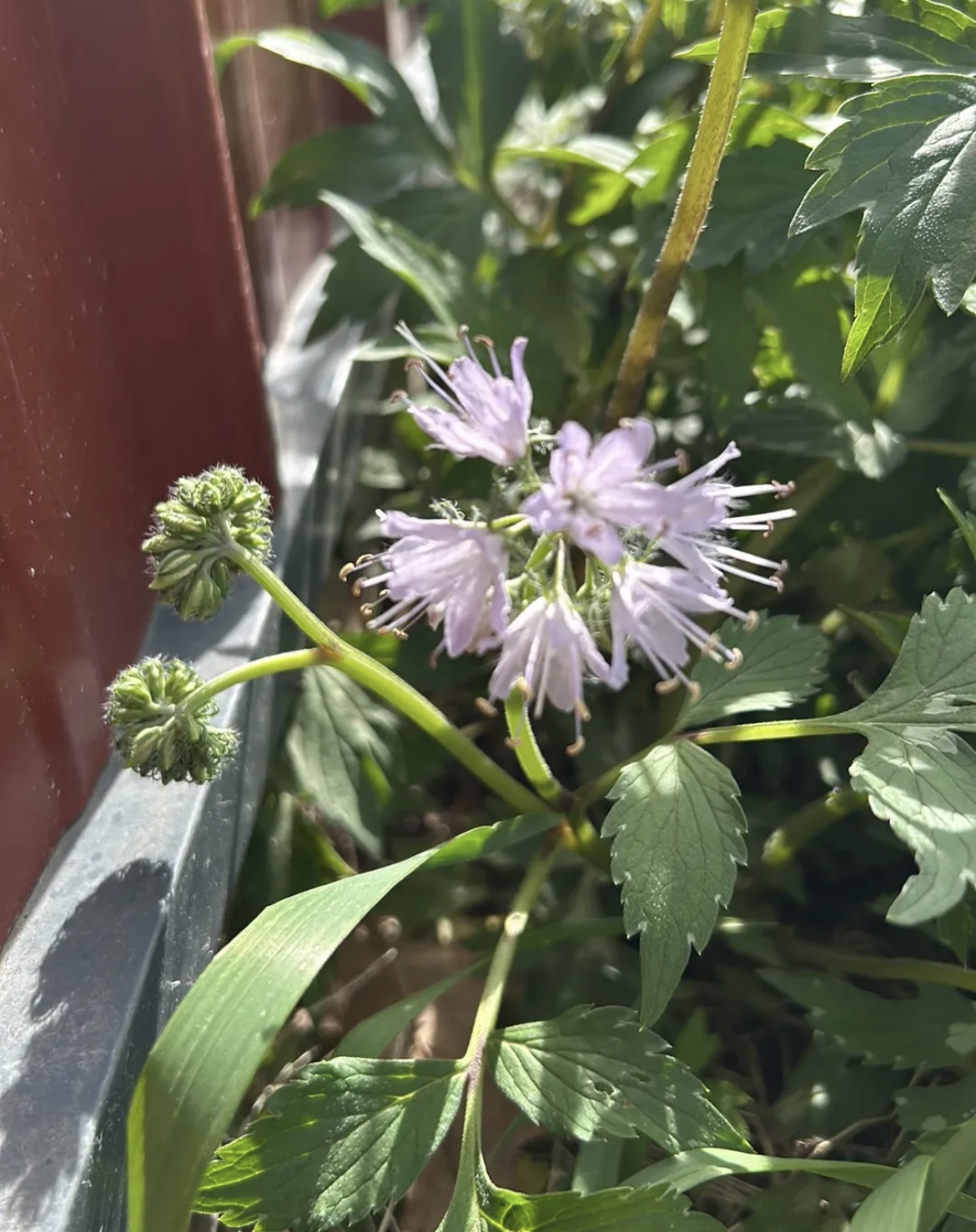We were out in the yard, inspecting the blossoms on the apple and cherry trees, when sprays of little lavender flowers caught our attention. A patch of Virginia waterleaf (Hydrophyllum virginianum) was growing next to the shop.
The plants were about a foot tall with long, deeply lobed leaves. Clusters of flowers hung at the ends of stalks. Each flower had five long petals forming a bell shape or tube. In the center, long hairy stamens stuck out beyond the petals. White, thin, threadlike and hairy, the stamens wave in the breeze.
My botany education has been sorely neglected for years, so although I could say with certainty that these little threads rising from the middle of the flower were stamens, I needed a refresher on their role and construction. So, bear with me while I explore.
Stamens are the male part of the flower. A stamen consists of a filament—a thread-like stalk–rising from the center of the flower, and an anther at the end of the filament. In the case of our Virginia waterleaf, the anthers are yellow turning brown. The anthers are where pollen grains are developed. The pollen grains contain the male’s contribution to the genetics of the seed that will eventually develop. They are released by the anthers when ready. The pollen grains are then dispersed by the wind or, in the case of our Virginia waterleaf, they are snagged by bees and carried to other waterleaf plants where they fertilize the flowers.
The early leaves often have whitish spots scattered on them that look like water spots—thus perhaps the name waterleaf. The Virginia part of its name presumably comes from being identified and classified in Virginia in the 1800s. It is native to North America, east of the Rockies. Other names for it include John’s cabbage, Shawnee salad, eastern waterleaf, burr flower, brook flower, Indian cabbage, and Shawnee lettuce.
This pretty little plant is a perennial preferring partial shade to thrive. It builds an underground root system and spreads either by seed or by sending up shoots from the roots. In this way, it can create patches of dense ground cover at the edge of woods or, in our case, at the corner of the shop building. A species of long-tongued native cuckoo bees feed exclusively on the nectar of waterleaf plants. Other pollinators that visit these little lavender flowers include carpenter bees, bumblebees, and other long-tongued bees and flies able to reach deep into the flower to get the promised nectar.
The cuckoo bees are actually not the best pollinators. They are a type of kleptoparasitic sweat bee and don’t have the hairs that bees use to collect pollen. They also don’t have the pollen baskets that bees have on their legs to carry pollen back to the nest. They have no need to carry pollen back to the nest, because they have stolen the nests of other bees who have already done the provisioning. They’re called cuckoo bees because, like the cuckoo bird, they lay their eggs in someone else’s nest. When their eggs hatch, the larvae get busy killing and eating the larvae of the original nest owner. They eat the food stored for the other bee’s larvae, and the next generation pupates inside the stolen nest. Then they emerge as adult sweat bees and start the process all over again. These bees have actually evolved mechanisms to aid in their banditry. Spines on their back legs help them brace in the stolen tunnel when attacked by the owner. They also have ridges in their exoskeletons that protect them from the sting and mandibles of an angry host nest owner.
Kleptoparasitism is not uncommon in the animal world. It is one of many strategies that insects (and cowbirds for that matter) use to perpetuate their own species; and that, after all, is the goal.
The flowers will bloom for the next several weeks, feeding the bees. They’ll also be feeding the deer, who have a fondness for waterleaf plants. And the cowbirds in the yard may look down on their brothers in kleptoparasitism and smile—it’s a brilliant way to carry on without doing all the work.
Photo by Author. Alt text: Tender leaves and a lavender flower cluster of Virginia Waterleaf crowd up against red siding of the shop building on Owl Acres.
